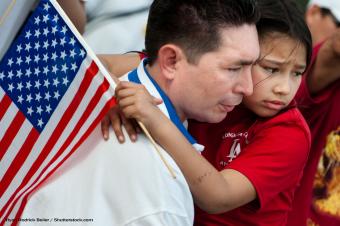Family Reunification
Family Reunification
Recent Activity
Recent Activity
Commentaries
January 2018
The White House immigration plan offered as a solution to resolve the fate of DREAMers seeks legal immigration cuts unlike any seen since 1924. In addition to a decrease of up to 40 percent in family-sponsored immigration, the proposal demands vast increases in enforcement and a retrenchment in protections for those seeking humanitarian relief. In exchange, one-sixth of the unauthorized population could gain legal status.















A Path to Citizenship for 1.8 Million DREAMERs? Despite Talk, No Proposal Would Do So